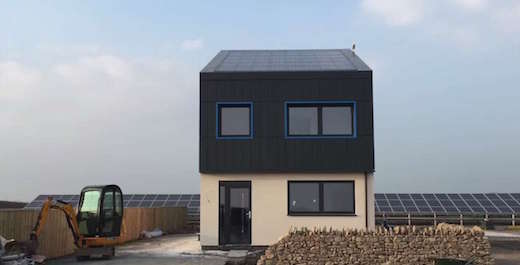
Earlier this year, the so-called Solcer House was built by a team from Cardiff University in Wales. Solcer House is such an accomplishment because it is low-cost, low-carbon and energy positive. It was built as part of the Solcer Project, which is a part of the Low Carbon Research Institute Program and the main aim of this prototype house is to show how easily and affordably low-carbon goals can actually be met in architecture.
Solcer House is located in Pyle near Bridgend in Wales, and it was built according to the “Buildings as Power Stations” concept, which was developed by the SPECIFIC Innovation and Knowledge Centre. The house boasts of an energy-positive status, which was made possible through a reduced energy demand, steady supply of renewable energy and effective storing of energy for later use. The house is connected to the grid, and takes from it when it needs additional energy, and exports back when it produces a surplus.

Solcer House was constructed using low-carbon cement. It was also fitted with high levels of thermal insulation, structural insulated panels (SIPS), and good external insulation to further reduce its energy consumption. The home also features low-emissivity double-glazed aluminum-clad timber frame windows and doors.
Some of the energy is harvested via transpired solar collectors (TSC), which are made up of a perforated skin that covers the exterior of the house. This skin allows air to enter the cavity where it is then warmed by the sun’s rays. This hot air is then circulated through the house to heat it, and represents a low-cost ventilation based heating system.
A 4.3 kWp glazed photovoltaic solar panel array is responsible for generating the necessary electricity. This array is integrated into the south-facing roof of the house, which eliminated the need to bolt it on. A 6.9-kWh battery is used to store the energy that is not used right away. The electricity that is generated and stored is used to power the ventilation, hot water system, heating system and household appliances.
Solcer House was built in February 2015, and it took about 16 weeks to complete.
Related Articles on JetsonGreen.com:
Carbon Positive Prefab Home
Boston to Get an Energy Positive Building
Year Long Study of Net-Zero Energy Home Completed Successfully

Leave a Reply
You must be logged in to post a comment.